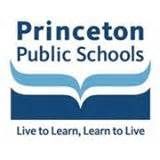The Princeton Public Schools Board of Education is expected to decide in the upcoming weeks whether to go ahead with having a facilities bond referendum in December, even though officials have yet to determine the dollar amount of the referendum.
At a five-hour board meeting dominated by the referendum, officials on Sept. 25 explored a smaller, compromise proposal for $82.5 million, down from an earlier $129.6 million version they had been considering. In a nod to concerns from the public about absorbing a large tax hike all at once, district administrators are considering forgoing $47 million worth of work at Princeton High School, delaying it for another referendum in the future.
The smaller referendum, divided into two questions on the ballot, would call for safety and security upgrades and other improvements to the four elementary schools and the John Witherspoon Middle School, athletic field improvements, four additional classrooms and other work at Princeton High School. Those projects, costing $26.9 million, would be in question one.
In question two for $55.5 million, the district would look to build a new school for fifth- and sixth-graders on the site of the Valley Road School and acquire 15 acres on Thanet Circle for current and future facility needs.
The district’s financial adviser, Mary Lyons, showed that for the average assessed home of $837,074, taxes would increase by an additional $164.83 in 2020 if both questions are approved by voters.
As the meeting drifted toward and eventually past midnight, officials continued to think out loud about what they should do. Board member Debbie Bronfeld suggested dropping the new school entirely and doing all of the high school work.
“I didn’t want to compromise from the beginning,” board member Betsy Baglio said. “I think we needed all of it and then I heard from the community. Then I thought about the enrollments and the five-six is where those kids are. If we don’t do something to meet the needs of the five-six, we’re going to have trailers on the lawn at (John Witherspoon Middle School).”
One rationale administrators have used for the referendum is rising enrollment, in a community where schools already are at or over capacity.
“This is an incredibly complex challenge for the community and there are so many moving pieces,” board member Beth Behrend said. “But when I step back and I say what am I on this board to do, I need to make sure we have adequate space for the children in this district.”
One unknown for the board is how long will the district have a chance to acquire the Thanet Circle property. Business Administrator Stephanie Kennedy said the property owners’ understanding was the district would have a referendum in November, a date that got pushed back due to delays in getting approval from the state Department of Education for the referendum package.
“Now they are already passed that,” Kennedy said. “So at any time, they could just cut us loose and say, ‘We’re done with you.’ ”
Board members voted 9-1 to authorize having a special election on Dec. 11, but officials still have time to back out. At a meeting on Oct. 9, officials will have to vote to determine the wording of the ballot question.
During public comment, the board heard a range of views from a community that finds itself split on what to do. Some residents did not want the district to defray the work at the high school.
“We should not have kids needing to eat on floors all over the building due to a lack of space,” resident Lori Weir said.
The referendum would work in a two-step process, so voters would have to approve question one to give question two a chance of passing. On the other hand, voters would also have the option of passing only question one. One resident said she did not like the approach officials were considering.
“By putting two questions on the ballot, you are basically suggesting the second question is expendable, that only the first one could pass and the second one could fail and that would be OK,” said Julia Sass Rubin, the wife of school board member Greg Stankiewicz.
Speakers included two school board candidates, Mary Clurman and Daniel Dart, weighing in as well.
“I appreciate the increasing recognition that voter questions represent voter interest,” Clurman said.
Dart said he “enthusiastically” supported the trimmed down first question that would pay “for the critical needs,” but he stopped short at that, instead calling for having a “thoughtful discussion and analysis about the best way to proceed on the other items.”
Earlier in the meeting, Princeton High School Principal Gary Snyder said the building lacks “a number of different kinds of spaces.”
He said for instance, a community fair this month that was supposed to be held outside had to be moved indoors due to rain. The event took place in a hallway of a building that was constructed in the 1920s, with hundred of students and others in attendance.
“It went as well as it could go, but it’s crowded. We don’t have a gathering space,” Snyder said.

